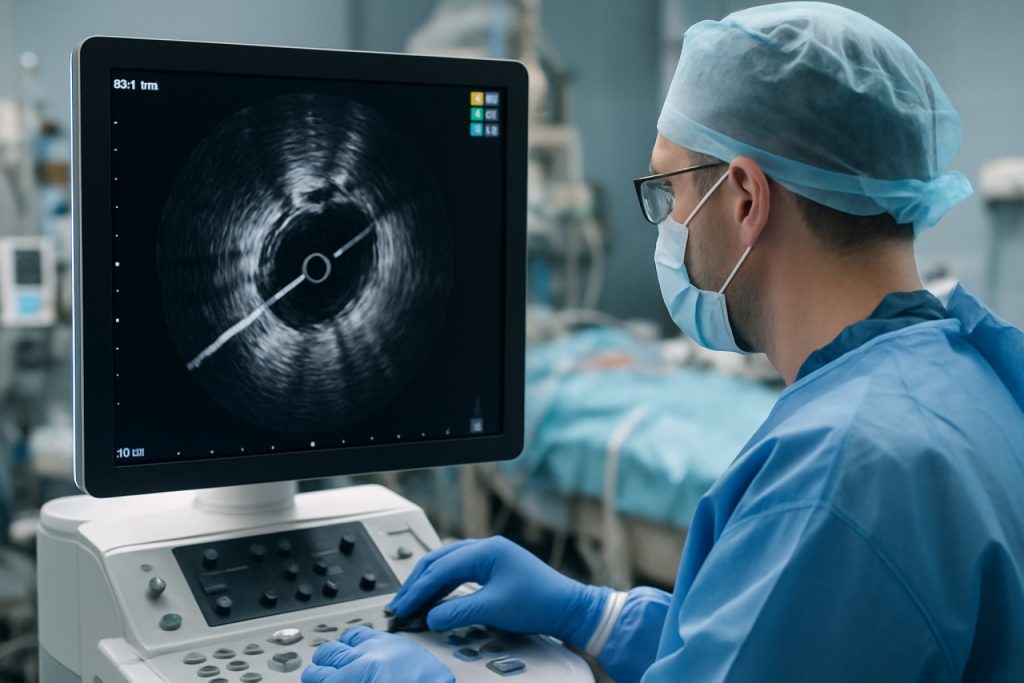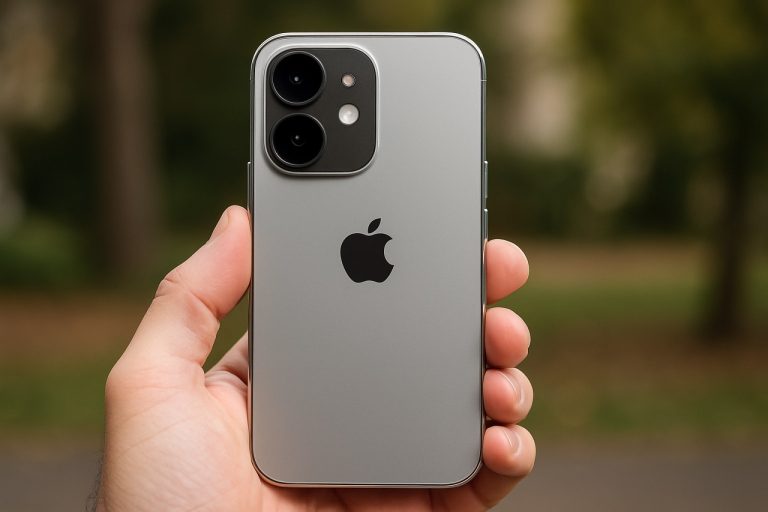
Unlocking the Future of Intravascular Imaging Systems in 2025: How Advanced Technologies and Rising Demand Are Driving a Projected 12% CAGR Over the Next Five Years. Discover the Innovations and Market Forces Shaping Cardiovascular Diagnostics.
- Executive Summary: Key Findings and Market Highlights
- Market Overview: Defining Intravascular Imaging Systems in 2025
- Market Size and Forecast (2025–2030): Growth Drivers and 12% CAGR Analysis
- Competitive Landscape: Leading Players and Emerging Innovators
- Technological Advancements: OCT, IVUS, and Next-Gen Imaging Modalities
- Regulatory Environment and Reimbursement Trends
- Regional Analysis: North America, Europe, Asia-Pacific, and Rest of World
- Key End-User Segments: Hospitals, Specialty Clinics, and Research Institutions
- Challenges and Barriers: Technical, Clinical, and Market Adoption Hurdles
- Future Outlook: Disruptive Trends and Strategic Opportunities Through 2030
- Sources & References
Executive Summary: Key Findings and Market Highlights
The global market for intravascular imaging systems is poised for significant growth in 2025, driven by technological advancements, increasing prevalence of cardiovascular diseases, and a rising demand for minimally invasive diagnostic procedures. Intravascular imaging systems, including intravascular ultrasound (IVUS) and optical coherence tomography (OCT), are critical tools for visualizing the interior of blood vessels, enabling precise assessment and management of coronary artery disease.
Key findings indicate that the adoption of intravascular imaging is accelerating in both developed and emerging markets, supported by favorable reimbursement policies and growing clinical evidence of improved patient outcomes. Major manufacturers such as Philips, Boston Scientific Corporation, and Terumo Corporation continue to invest in research and development, introducing next-generation imaging catheters with enhanced resolution, real-time data integration, and user-friendly interfaces.
The hospital segment remains the largest end-user, accounting for the majority of procedures, while ambulatory surgical centers are witnessing increased adoption due to the shift toward outpatient care. North America leads the market, attributed to high healthcare expenditure and early adoption of advanced technologies, but Asia-Pacific is expected to register the fastest growth, fueled by expanding healthcare infrastructure and rising awareness of cardiovascular health.
Key market highlights for 2025 include:
- Continued integration of artificial intelligence and machine learning for automated image analysis and decision support.
- Expansion of product portfolios by leading companies, with a focus on hybrid imaging systems and wireless connectivity.
- Strategic collaborations between device manufacturers and healthcare providers to streamline workflow and improve clinical outcomes.
- Regulatory approvals for novel devices, particularly in the U.S., Europe, and Japan, facilitating broader market access.
Despite robust growth prospects, challenges such as high device costs, the need for specialized training, and reimbursement variability persist. Nevertheless, the outlook for 2025 remains positive, with intravascular imaging systems increasingly recognized as essential components of modern cardiovascular care.
Market Overview: Defining Intravascular Imaging Systems in 2025
In 2025, intravascular imaging systems represent a critical segment of cardiovascular diagnostics, enabling clinicians to visualize the interior of blood vessels in real time. These systems are primarily used to assess the morphology and pathology of coronary arteries, guiding interventions such as angioplasty and stent placement. The two dominant modalities in this field are intravascular ultrasound (IVUS) and optical coherence tomography (OCT), each offering unique advantages in terms of resolution, penetration depth, and clinical application.
The market for intravascular imaging systems is shaped by ongoing technological advancements and the increasing prevalence of cardiovascular diseases worldwide. As of 2025, the adoption of these systems is driven by the need for precise lesion assessment, improved patient outcomes, and the growing complexity of percutaneous coronary interventions (PCI). Leading manufacturers, such as Philips and Boston Scientific Corporation, continue to innovate, introducing systems with enhanced imaging capabilities, user-friendly interfaces, and integration with other diagnostic and therapeutic platforms.
Regulatory bodies, including the U.S. Food and Drug Administration (FDA) and the European Commission, play a pivotal role in shaping the market landscape by setting standards for safety, efficacy, and interoperability. In 2025, the market is also influenced by reimbursement policies, hospital purchasing trends, and the growing emphasis on value-based healthcare.
Emerging trends include the integration of artificial intelligence for automated image analysis, miniaturization of imaging catheters, and the development of hybrid systems that combine IVUS and OCT technologies. These innovations aim to enhance diagnostic accuracy, reduce procedure times, and expand the clinical utility of intravascular imaging beyond coronary applications to peripheral and neurovascular interventions.
Overall, the intravascular imaging systems market in 2025 is characterized by robust growth, technological innovation, and a strong focus on improving clinical outcomes. The continued collaboration between device manufacturers, healthcare providers, and regulatory agencies is expected to further advance the adoption and effectiveness of these essential diagnostic tools.
Market Size and Forecast (2025–2030): Growth Drivers and 12% CAGR Analysis
The global market for intravascular imaging systems is poised for robust expansion between 2025 and 2030, with projections indicating a compound annual growth rate (CAGR) of approximately 12%. This growth trajectory is underpinned by several key drivers, including the rising prevalence of cardiovascular diseases, technological advancements in imaging modalities, and increasing adoption of minimally invasive diagnostic procedures.
Cardiovascular diseases remain the leading cause of mortality worldwide, prompting healthcare systems to invest in advanced diagnostic tools. Intravascular imaging systems, such as intravascular ultrasound (IVUS) and optical coherence tomography (OCT), are increasingly utilized for precise visualization of vessel morphology and plaque characterization. The growing clinical evidence supporting the efficacy of these modalities in improving patient outcomes is encouraging their integration into routine interventional cardiology practices.
Technological innovation is another significant growth catalyst. Leading manufacturers are introducing next-generation imaging catheters with enhanced resolution, faster image acquisition, and improved compatibility with existing interventional platforms. For instance, Philips and Boston Scientific Corporation have launched advanced IVUS and OCT systems that offer real-time, high-definition imaging, facilitating more accurate diagnosis and treatment planning.
The market is also benefiting from the increasing preference for minimally invasive procedures, which reduce patient recovery times and hospital stays. Intravascular imaging systems play a pivotal role in guiding these interventions, particularly in complex cases such as chronic total occlusions and bifurcation lesions. The growing body of clinical guidelines from organizations like the American College of Cardiology and the European Society of Cardiology recommending the use of intravascular imaging to optimize percutaneous coronary interventions is further accelerating market adoption.
Regionally, North America and Europe are expected to maintain significant market shares due to established healthcare infrastructure and high procedural volumes. However, Asia-Pacific is anticipated to witness the fastest growth, driven by rising healthcare expenditure, expanding access to advanced medical technologies, and increasing awareness of cardiovascular health.
In summary, the intravascular imaging systems market is set for dynamic growth through 2030, propelled by clinical demand, technological progress, and supportive healthcare policies. Stakeholders across the value chain are likely to benefit from sustained innovation and expanding clinical applications.
Competitive Landscape: Leading Players and Emerging Innovators
The competitive landscape of intravascular imaging systems in 2025 is characterized by a dynamic interplay between established market leaders and a growing cohort of innovative entrants. The sector is primarily dominated by a few multinational corporations with extensive portfolios in cardiovascular imaging and interventional cardiology. Philips and Boston Scientific Corporation are at the forefront, leveraging their global distribution networks and robust R&D capabilities to maintain leadership in intravascular ultrasound (IVUS) and optical coherence tomography (OCT) technologies. Abbott also holds a significant share, particularly through its subsidiary, St. Jude Medical, which has pioneered advancements in OCT imaging.
These established players are continuously investing in product innovation, integrating artificial intelligence (AI) and machine learning algorithms to enhance image resolution, automate plaque characterization, and streamline workflow for clinicians. For instance, Philips has introduced next-generation IVUS catheters with improved deliverability and real-time data analytics, while Boston Scientific Corporation has focused on miniaturization and user-friendly interfaces to expand the clinical utility of their imaging platforms.
Alongside these giants, a wave of emerging innovators is reshaping the competitive landscape. Startups and smaller medtech firms are targeting unmet clinical needs, such as high-resolution imaging for complex lesions, integration with robotic-assisted interventions, and cost-effective solutions for resource-limited settings. Companies like Conavi Medical are gaining attention for their hybrid imaging systems that combine IVUS and OCT modalities, offering comprehensive vessel assessment in a single procedure. Meanwhile, Terumo Corporation is expanding its presence in the global market with novel catheter designs and strategic partnerships.
The competitive environment is further intensified by collaborations between device manufacturers and academic institutions, as well as partnerships with digital health companies to develop cloud-based image management and remote consultation platforms. Regulatory approvals in major markets, such as the U.S. Food and Drug Administration and the European Medicines Agency, continue to be pivotal for market entry and expansion.
Overall, the intravascular imaging systems market in 2025 is marked by rapid technological evolution, strategic alliances, and a focus on clinical outcomes, with both established leaders and agile innovators driving the next wave of advancements.
Technological Advancements: OCT, IVUS, and Next-Gen Imaging Modalities
Technological advancements in intravascular imaging systems have significantly enhanced the diagnosis and management of cardiovascular diseases. Two of the most widely adopted modalities—Optical Coherence Tomography (OCT) and Intravascular Ultrasound (IVUS)—have seen substantial innovation, while next-generation imaging technologies are poised to further transform the field.
OCT utilizes near-infrared light to generate high-resolution, cross-sectional images of blood vessels, enabling clinicians to visualize microstructural details such as thin-cap fibroatheromas and stent apposition. Recent developments have focused on faster image acquisition, improved catheter designs, and integration with artificial intelligence for automated plaque characterization. Leading manufacturers like Abbott and Terumo Corporation have introduced systems with enhanced pullback speeds and real-time 3D rendering, facilitating more precise interventions.
IVUS, on the other hand, employs high-frequency sound waves to provide detailed images of vessel walls and plaque morphology. Innovations in IVUS technology include the advent of high-definition transducers, miniaturized catheters, and hybrid systems that combine IVUS with other modalities. Companies such as Philips and Boston Scientific Corporation have developed platforms that offer improved spatial resolution and user-friendly interfaces, supporting more accurate assessment of lesion severity and stent deployment.
Beyond OCT and IVUS, next-generation imaging modalities are emerging to address limitations of current technologies. Near-infrared spectroscopy (NIRS), for example, enables chemical characterization of plaques, while photoacoustic imaging combines optical and ultrasound techniques for enhanced tissue differentiation. Integration of imaging data with advanced software platforms and artificial intelligence is also gaining traction, allowing for automated measurements, predictive analytics, and improved workflow efficiency.
The convergence of these technological advancements is driving a paradigm shift in intravascular imaging, enabling more personalized and effective cardiovascular care. As manufacturers continue to innovate, the adoption of multimodal imaging systems and AI-driven analytics is expected to expand, offering clinicians unprecedented insights into vascular pathology and treatment outcomes.
Regulatory Environment and Reimbursement Trends
The regulatory environment for intravascular imaging systems is evolving rapidly as these technologies become increasingly integral to cardiovascular diagnostics and interventions. In the United States, the U.S. Food and Drug Administration (FDA) classifies most intravascular imaging devices, such as intravascular ultrasound (IVUS) and optical coherence tomography (OCT), as Class II or Class III medical devices, requiring rigorous premarket approval or clearance processes. The FDA’s focus has shifted toward ensuring not only device safety and efficacy but also interoperability and cybersecurity, reflecting the growing integration of imaging systems with digital health platforms.
In Europe, the transition from the Medical Device Directive (MDD) to the Medical Device Regulation (MDR) has introduced stricter requirements for clinical evidence, post-market surveillance, and traceability. Manufacturers must now provide more comprehensive data on device performance and safety, impacting the speed and cost of bringing new intravascular imaging systems to market. The European Commission oversees these regulations, and the MDR’s emphasis on real-world evidence is expected to shape product development and post-market strategies through 2025.
Reimbursement trends are also shifting, with payers increasingly demanding robust clinical and economic evidence to justify coverage. In the U.S., the Centers for Medicare & Medicaid Services (CMS) has established specific reimbursement codes for IVUS and OCT procedures, but coverage decisions can vary by region and payer. Demonstrating improved patient outcomes and cost-effectiveness is critical for manufacturers seeking favorable reimbursement. In Europe, reimbursement is determined at the national level, leading to variability in access and utilization of intravascular imaging technologies.
Globally, regulatory harmonization efforts—such as those led by the International Medical Device Regulators Forum (IMDRF)—aim to streamline approval processes and facilitate market entry. However, local requirements and health technology assessment (HTA) processes continue to pose challenges for manufacturers. As the clinical value of intravascular imaging becomes more widely recognized, ongoing collaboration between industry, regulators, and payers will be essential to ensure timely patient access and sustainable reimbursement models in 2025 and beyond.
Regional Analysis: North America, Europe, Asia-Pacific, and Rest of World
The global market for intravascular imaging systems is characterized by significant regional variations, driven by differences in healthcare infrastructure, regulatory environments, and adoption rates of advanced cardiovascular technologies. In 2025, North America, Europe, Asia-Pacific, and the Rest of the World (RoW) each present distinct dynamics influencing the growth and utilization of intravascular imaging systems.
North America remains the leading region, propelled by high healthcare expenditure, a robust network of specialized cardiac centers, and early adoption of innovative imaging modalities. The United States, in particular, benefits from favorable reimbursement policies and a strong presence of key manufacturers such as Boston Scientific Corporation and Koninklijke Philips N.V.. Ongoing clinical research and a high prevalence of cardiovascular diseases further stimulate demand for intravascular ultrasound (IVUS) and optical coherence tomography (OCT) systems.
Europe follows closely, with countries like Germany, the United Kingdom, and France at the forefront of adoption. The region’s growth is supported by well-established healthcare systems and increasing investments in minimally invasive procedures. Regulatory harmonization under the European Union Medical Device Regulation (EU MDR) has streamlined market entry for new devices, while organizations such as BIOTRONIK SE & Co. KG and Abbott Laboratories play pivotal roles in advancing imaging technologies.
Asia-Pacific is experiencing the fastest growth, driven by rising cardiovascular disease incidence, expanding healthcare infrastructure, and growing awareness of advanced diagnostic tools. Countries like Japan, China, and India are witnessing increased investments in hospital modernization and training of interventional cardiologists. Local and international manufacturers, including Terumo Corporation, are expanding their presence to meet the surging demand for intravascular imaging solutions.
The Rest of the World (RoW) region, encompassing Latin America, the Middle East, and Africa, is gradually adopting intravascular imaging systems. Growth here is primarily fueled by improving access to healthcare and the gradual introduction of advanced cardiovascular interventions. However, limited reimbursement frameworks and budget constraints continue to pose challenges to widespread adoption.
Overall, while North America and Europe maintain leadership in technology adoption and market size, Asia-Pacific is emerging as a key growth engine, and the RoW region presents untapped potential as healthcare infrastructure continues to evolve.
Key End-User Segments: Hospitals, Specialty Clinics, and Research Institutions
Intravascular imaging systems are critical tools in modern cardiovascular care, providing real-time, high-resolution visualization of blood vessels to guide diagnosis and intervention. The adoption and utilization of these systems are primarily driven by three key end-user segments: hospitals, specialty clinics, and research institutions.
Hospitals represent the largest end-user segment for intravascular imaging systems. These facilities, particularly those with advanced cardiology departments, rely on technologies such as intravascular ultrasound (IVUS) and optical coherence tomography (OCT) to enhance the precision of procedures like percutaneous coronary intervention (PCI) and stent placement. The integration of imaging systems into catheterization labs enables interventional cardiologists to assess plaque morphology, vessel size, and stent deployment, ultimately improving patient outcomes. Leading hospital networks, such as Mayo Clinic and Cleveland Clinic, have been at the forefront of adopting these technologies to support evidence-based cardiovascular care.
Specialty clinics, including dedicated heart and vascular centers, form another significant segment. These clinics often focus on outpatient diagnostic and minimally invasive procedures, where intravascular imaging systems are used to provide detailed vessel assessment without the need for open surgery. The portability and user-friendly interfaces of modern imaging platforms make them well-suited for specialty settings, allowing for rapid diagnosis and tailored treatment plans. Organizations such as American Heart Association support the use of advanced imaging in specialty care to promote early detection and intervention.
Research institutions play a pivotal role in the development and validation of new intravascular imaging technologies. Academic medical centers and dedicated cardiovascular research labs utilize these systems to study vascular biology, device performance, and novel imaging modalities. Their work often leads to the refinement of imaging protocols and the introduction of next-generation devices. Institutions like National Institutes of Health (NIH) and European Society of Cardiology are instrumental in advancing the scientific understanding and clinical applications of intravascular imaging.
Collectively, these end-user segments drive innovation, clinical adoption, and the ongoing evolution of intravascular imaging systems, ensuring their continued relevance in cardiovascular medicine.
Challenges and Barriers: Technical, Clinical, and Market Adoption Hurdles
Intravascular imaging systems, such as intravascular ultrasound (IVUS) and optical coherence tomography (OCT), have transformed cardiovascular diagnostics and interventions. However, their widespread adoption faces several challenges across technical, clinical, and market domains.
Technical Barriers: The integration of high-resolution imaging with real-time data processing remains a significant technical hurdle. Advanced systems require miniaturized, durable catheters capable of navigating complex vascular anatomies without compromising image quality. Additionally, ensuring compatibility with existing catheterization lab infrastructure and seamless integration with other diagnostic modalities is complex. The need for robust data storage, transfer, and cybersecurity protocols further complicates system design and deployment. Manufacturers such as Philips and Boston Scientific Corporation are investing in R&D to address these issues, but progress is incremental due to the stringent regulatory requirements for medical devices.
Clinical Challenges: Clinicians face a learning curve in interpreting intravascular images and integrating them into decision-making. While these systems provide detailed visualization of vessel morphology, translating this information into improved patient outcomes requires standardized protocols and extensive training. There is also ongoing debate regarding the cost-effectiveness and clinical utility of routine intravascular imaging versus traditional angiography, especially in resource-limited settings. Professional societies such as the American College of Cardiology are working to develop guidelines and educational resources, but adoption varies widely by region and institution.
Market Adoption Hurdles: The high upfront cost of intravascular imaging systems and disposable catheters can be prohibitive for many healthcare providers. Reimbursement policies differ across countries and insurers, often limiting the financial incentive to adopt these technologies. Furthermore, the market is dominated by a few large players, which can stifle competition and innovation. Smaller hospitals and clinics may lack the capital or patient volume to justify investment, slowing penetration outside major academic centers. Efforts by organizations like Medtronic to offer flexible purchasing models and training programs aim to lower these barriers, but significant disparities remain.
Addressing these challenges will require coordinated efforts among manufacturers, clinicians, regulatory bodies, and payers to ensure that the benefits of intravascular imaging are accessible and sustainable across diverse healthcare settings.
Future Outlook: Disruptive Trends and Strategic Opportunities Through 2030
The future of intravascular imaging systems is poised for significant transformation through 2030, driven by rapid technological advancements, evolving clinical needs, and strategic industry shifts. One of the most disruptive trends is the integration of artificial intelligence (AI) and machine learning algorithms into imaging platforms. These technologies are expected to enhance image interpretation, automate lesion detection, and provide real-time decision support, thereby improving diagnostic accuracy and procedural efficiency. Companies such as Philips and Boston Scientific Corporation are already investing in AI-powered solutions to augment their intravascular ultrasound (IVUS) and optical coherence tomography (OCT) systems.
Another key trend is the miniaturization and multifunctionality of imaging catheters. Next-generation devices are being designed to combine imaging with therapeutic capabilities, such as drug delivery or ablation, enabling more comprehensive and less invasive interventions. The development of wireless and disposable imaging catheters is also anticipated to reduce infection risks and streamline workflow in catheterization laboratories.
Strategic opportunities are emerging from the expansion of intravascular imaging applications beyond coronary artery disease. There is growing interest in peripheral vascular, neurovascular, and structural heart interventions, which will broaden the addressable market and drive innovation in device design and software analytics. Collaborations between device manufacturers and healthcare providers, such as those fostered by Abbott, are expected to accelerate clinical adoption and evidence generation for new indications.
Regulatory and reimbursement landscapes are also evolving, with agencies like the U.S. Food and Drug Administration (FDA) encouraging the development of safer, more effective imaging modalities. The push for value-based care is likely to favor technologies that demonstrate clear clinical and economic benefits, incentivizing manufacturers to invest in robust clinical trials and real-world evidence.
By 2030, the convergence of digital health, advanced imaging, and interventional therapeutics is expected to redefine the standard of care in vascular medicine. Companies that prioritize innovation, strategic partnerships, and evidence-based value propositions will be best positioned to capitalize on the disruptive opportunities in the intravascular imaging systems market.
Sources & References
- Philips
- Boston Scientific Corporation
- Terumo Corporation
- European Commission
- American College of Cardiology
- Conavi Medical
- Centers for Medicare & Medicaid Services (CMS)
- International Medical Device Regulators Forum (IMDRF)
- BIOTRONIK SE & Co. KG
- Mayo Clinic
- Cleveland Clinic
- American Heart Association
- National Institutes of Health (NIH)
- Medtronic



